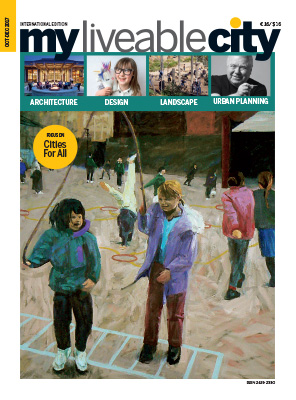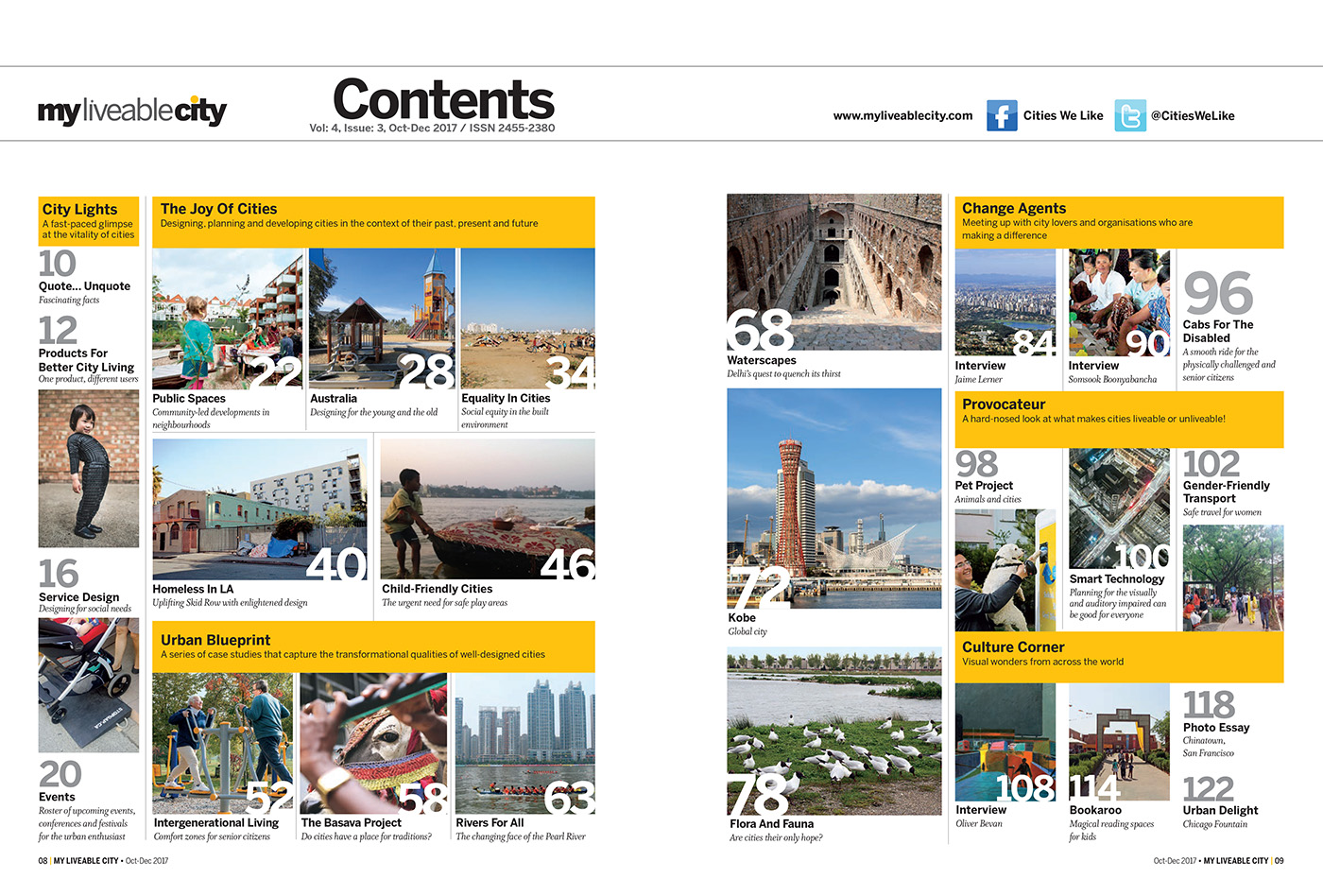Oct-Dec 2017
ISSN : 2455-2380
Cities for All
Paola Huijding, Shyam Khandekar, Yamini Kumar, Chongxian Chen, Yu Xia, Rajeev Malagi, Sonal Shah, Sudeshna Chatterjee, Bruce Echberg, Liesl Vivier, Annemiek van Koldenhoven, Nikos Margaritis, Meera Joshi, Nathan Ritter, Sailesh Ghelani, Sheeba Amir, Ashim Manna, Venkatesh, Willem Swart, Amrita Kulkarni, Manasi Jagannatha, Erika Klein, John Jung, Tania Phillip, Bradford Perkin, Vicki Bartling, Vinayak Bharne, Shruti Hemani
Choose your edition and your reading preference :
300.00
Please register your details before you add items to cart. Join My Liveable City.
If already registered then Click Here to login.


